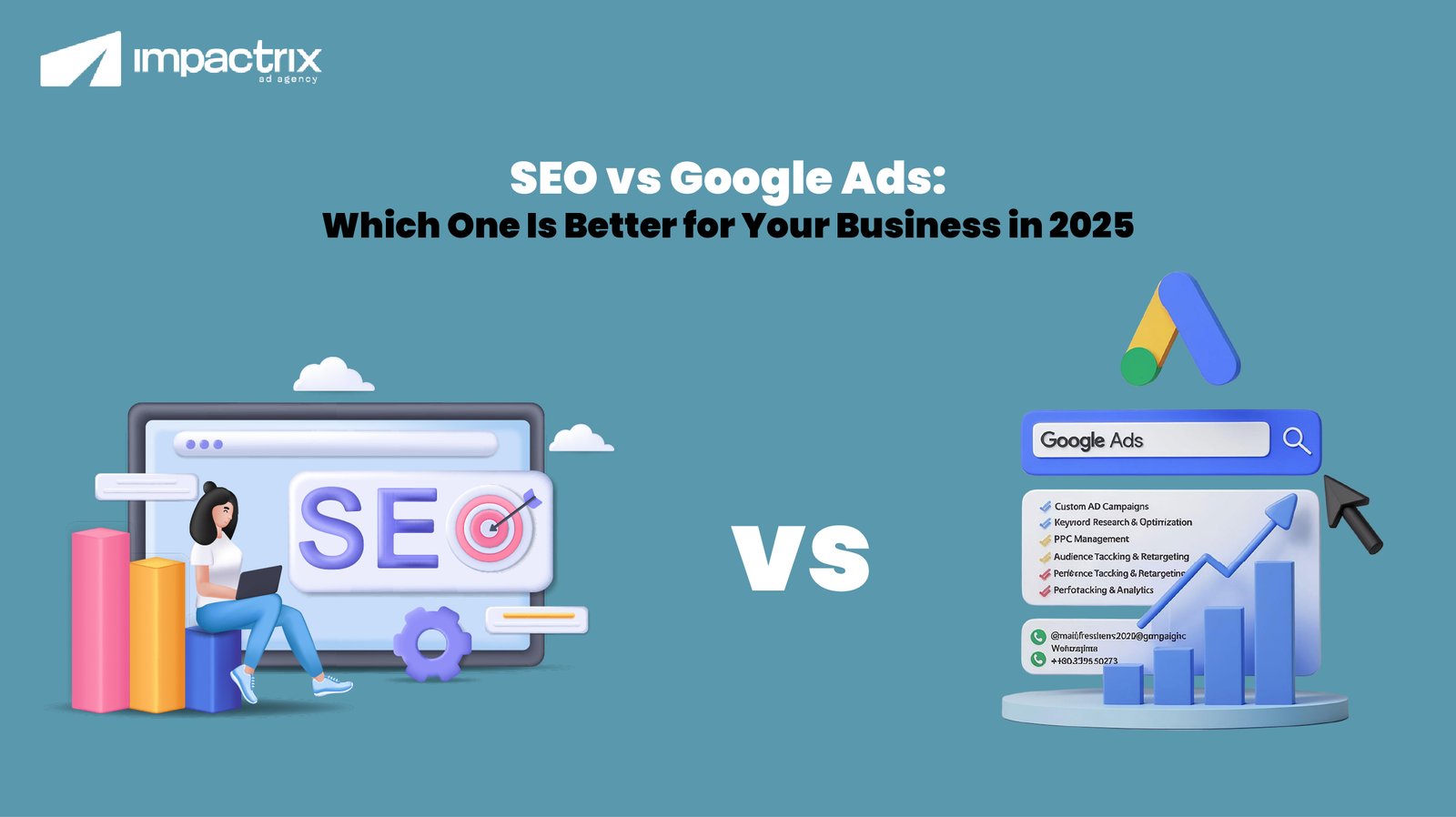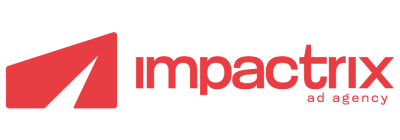
SEO vs Google Ads: Which One Is Better for Your Business in 2025?
SEO vs Google Ads: The Marketing Crossroads Businesses Face in 2025
In 2025, the online marketing landscape has become more competitive and complex than ever. With algorithm updates rolling out faster, consumer behavior evolving rapidly, and privacy regulations tightening, businesses are constantly reevaluating their strategies. Amidst all this, one decision that continues to puzzle business owners and marketers alike is whether to invest in SEO vs Google Ads. The answer is not as simple as one being better than the other. It often comes down to business goals, budget flexibility, competition, and the desired speed of results.
Both SEO (Search Engine Optimization) and Google Ads (formerly known as AdWords) aim to increase visibility on search engines. But the routes they take, the time they demand, and the return on investment they offer vary significantly. As businesses fight for digital relevance in 2025, choosing the right approach—or a balance between the two—has become a strategic decision with long-term consequences.
Understanding SEO in 2025
SEO has come a long way from just keyword stuffing and link-building. In 2025, it’s more about understanding search intent, delivering a great user experience, and producing genuinely helpful content. Search engines are more intelligent, using AI and machine learning to rank content that best answers user queries.
Voice search, visual search, and conversational AI are becoming standard search behaviors. Websites that are not optimized for conversational long-tail keywords or mobile-first indexing are struggling to keep up. Core Web Vitals continue to play a crucial role in rankings, alongside E-E-A-T (Experience, Expertise, Authoritativeness, and Trustworthiness), which is more strictly enforced than ever.
SEO requires time, effort, and consistency. But once your site ranks high organically, the traffic it brings is long-lasting, cost-effective, and usually more trustable in the eyes of the user. However, algorithm changes remain a risk, which means even well-ranking pages can suddenly drop if not consistently maintained.
Google Ads in the Now: Quick Wins and Targeted Reach
In contrast, Google Ads offers an immediate way to appear at the top of search results. Businesses can run text, display, shopping, and video ads across the Google ecosystem with highly defined targeting options. In 2025, AI-powered Google Ads can predict user behavior and optimize ad delivery in real time, ensuring higher click-through rates and lower cost per acquisition—if set up correctly.
The biggest advantage of Google Ads is speed. You can start driving traffic to your site within hours of launching a campaign. This makes it ideal for product launches, time-sensitive offers, and new businesses looking to build visibility quickly. The ability to retarget users who have previously interacted with your site is a game-changer for converting leads into paying customers.
However, Google Ads can be expensive. Especially in competitive industries, the cost per click can skyrocket. And the moment you pause your ads, your traffic stops. Unlike SEO, which has a compounding effect, ads provide temporary visibility unless you keep paying.
Cost Comparison in 2025 For SEO vs Google Ads
The cost of SEO is mainly associated with content creation, technical website optimization, and long-term maintenance. It’s an upfront investment with delayed results, but the cost per lead decreases significantly over time. A well-optimized blog can continue bringing traffic for years without additional spend.
On the other hand, Google Ads is like renting a billboard. You pay for each click, impression, or conversion. You can set your budget and scale quickly, but the ROI depends on campaign structure, ad quality, landing page experience, and bidding strategy. For short-term goals, Google Ads often gives faster ROI, but for long-term sustainability, SEO is generally more cost-effective.
User Trust and Behavior
Today’s internet users are more informed and skeptical. In 2025, they are more likely to scroll past ads and trust organic search results, especially for informational queries. SEO brings in users who are researching, comparing, or planning to make a decision. These users are often more engaged because they found the site on their own rather than being targeted by an ad.
However, for commercial and transactional intent, ads still work effectively. A well-timed Google Shopping ad, local service ad, or even a branded video ad on YouTube can push a user to make a purchase decision instantly. The catch is making sure the ad doesn’t feel intrusive or irrelevant. In that sense, personalization becomes key—and Google Ads in 2025 offers a strong advantage with its AI-based targeting.
Control Over Messaging and Placement
Google Ads gives businesses full control over their messaging. You can write the copy, add sitelinks, test headlines, and refine based on live performance data. You can also choose where your ads appear, what keywords trigger them, and what audiences you want to reach.
With SEO, you have less direct control. Your meta descriptions might get rewritten by Google, and your position on the SERP depends on various dynamic factors. Also, SEO results take longer to test and tweak. But when it comes to building brand authority, nothing beats the organic route. When a user finds your blog ranking on page one without a single ad dollar spent, it builds credibility.
Analytics and Attribution
Tracking and analyzing performance is a major part of any marketing campaign. In 2025, businesses are leaning more toward unified analytics tools that blend organic and paid data to understand the entire customer journey. With Google Ads, you get detailed insights into clicks, conversions, ad performance, and user demographics. You can track ROI with laser precision, especially when integrated with tools like GA4.
SEO analytics are more holistic. You can see how people are finding your site, what content is performing well, and what queries you rank for. But attributing conversions directly to SEO can be tricky. A customer might find your site via a blog post, leave, and return days later via a branded search—making attribution multi-touch and less straightforward.
The Role of AI in 2025’s Search Landscape
AI is changing the game for both SEO and Google Ads. Search engines are now more intuitive, answering questions before users even finish typing. Featured snippets, “People also ask” boxes, and AI-generated summaries dominate the top of SERPs. SEO strategies now include optimizing for zero-click searches, improving structured data, and designing content for voice queries.
In Google Ads, AI takes center stage with Smart Bidding, Performance Max campaigns, and predictive audience targeting. It can analyze millions of data points in real time, dynamically adjusting bids and ad placements to get the best results. But while AI helps, it doesn’t replace strategic thinking. Businesses still need human marketers to guide messaging, creatives, and overall goals.
What Works Better for Different Business Types
For local businesses like salons, cafes, or gyms, a mix of both SEO and Google Ads works best. Google My Business optimization and local SEO can bring steady traffic, while targeted ads ensure visibility for limited-time promotions or new launches.
For e-commerce businesses, Google Ads—especially Shopping and Dynamic Remarketing—are essential for conversions. But building a strong SEO backbone with product descriptions, category pages, and blog content helps reduce dependency on paid channels.
For B2B service providers, SEO tends to deliver long-term value. Informative blogs, case studies, and whitepapers attract decision-makers organically. Google Ads can help target niche keywords and competitors, but the high cost per click in B2B means SEO is usually more sustainable.
The Hybrid Approach: Why Most Businesses Need Both
The truth in 2025 is that SEO and Google Ads are not enemies. They’re complementary. While SEO builds your long-term brand and credibility, Google Ads drives quick traffic and helps you test what converts. Using both channels gives you the agility to capture immediate demand while laying down roots for future visibility.
You can use Google Ads to test which keywords convert best, then build SEO content around those insights. Similarly, SEO can inform you about the topics people are most interested in, and you can turn those into high-converting ad campaigns. Retargeting users who came from organic search with Google Ads is another strategy that blends both channels beautifully.
Making the Right Choice for Your Business
So, is SEO better than Google Ads in 2025? Or vice versa? The real answer lies in your business model, goals, and resources. If you’re launching a product or campaign and need immediate visibility, Google Ads is your best friend. If you’re thinking long-term and want to build digital authority, SEO is your strongest asset.
Some businesses will lean heavily on paid ads to scale quickly and stay competitive. Others will focus more on content marketing, link-building, and SEO to establish themselves as industry leaders. But most will need a mix of both to stay visible, relevant, and profitable in a hyper-competitive market.
Final Thoughts: Strategy Over Tools
In the end, it’s not about whether SEO vs Google Ads which one is better—it’s about how you use them strategically. Marketing in 2025 is all about being agile, data-driven, and customer-obsessed. The smartest brands are those that listen to their audience, analyze performance consistently, and are willing to pivot when needed.
Whether you go organic, paid, or both—what matters most is your content quality, user experience, and clarity of purpose. With the right balance, businesses can use SEO to build trust and Google Ads to amplify it.
